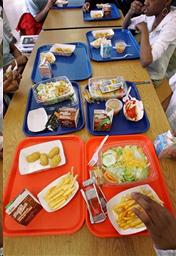chapter7
Table of Contents
- Chapter 7: Optimal Nutrition for an Active Lifestyle
- Objectives
- Nutrition Basics
- Eating
- Three Nutrient Functions
- Classes of Essential Nutrients
- I. Proteins (1 of 2)
- I. Proteins (2 of 2)
- Protein Sources
- II. Carbohydrates (1 of 3)
- II. Carbohydrates (2 of 3)
- II. Carbohydrates (3 of 3)
- Sources of Carbohydrates
- III. Fats (1 of 3)
- III. Fats (2 of 3)
- III. Fats (3 of 3)
- Sources of Fats
- IV. Vitamins and V. Minerals
- VI. Water
- Planning a Nutritious Diet (1 of 5)
- Planning a Nutritious Diet (2 of 5)
- Planning a Nutritious Diet (3 of 5)
- Planning a Nutritious Diet (4 of 5)
- Planning a Nutritious Diet (5 of 5)
- Health Claims and Ingredients
- Eating made easy!
- Sources (1 of 2)
- Sources (2 of 2)
Text and Images from Slide
Eating
- Common behavior
- Many choices
- Affected by personal, social, and cultural factors




Rikard Larma / AP Photo, Aaron Favila / AP Photo, Seth Perlman / AP Photo, Matthew Mead / AP Photo
